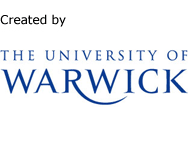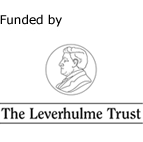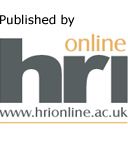


Overview
Translation was central to the dissemination of knowledge in the Renaissance. Translated works constituted crossroads where languages and cultures met and intersected, enabling nations and individuals to communicate, exchange ideas, and advance social and political movements which thus transcended national boundaries. Nowhere was this more true than in Britain during the period starting in 1473 with the printing of the first book and extending to 1640. In these 167 years, over six thousand translations were printed, into and out of twenty-one languages. Yet they have never all been recorded as a group, in one place, and are often inadequately, or even inaccurately, described in existing catalogues.
The Renaissance Cultural Crossroads Catalogue, funded by the Leverhulme Trust and based in the Centre for the Study of the Renaissance at the University of Warwick, provides for the first time a complete record of these translations. Web-based, analytical and annotated, it draws on the second edition of the Short-Title Catalogue of Books Printed in England, Scotland, & Ireland and of English Books Printed Abroad 1475-1640 edited by A. W. Pollard & G. R. Redgrave and is based on the online English Short-Title Catalogue, generously put at our disposal by the Director, Dr. Moira Goff.![]() The Renaissance Cultural Crossroads Catalogue, referred to throughout this Introduction as RCCC, lists all translations out of and into all languages printed in England, Scotland, and Ireland before 1641, as well as all translations out of all languages into English printed abroad before 1641.
The Renaissance Cultural Crossroads Catalogue, referred to throughout this Introduction as RCCC, lists all translations out of and into all languages printed in England, Scotland, and Ireland before 1641, as well as all translations out of all languages into English printed abroad before 1641.
Please note that some of the entries are still in the process of being completed or proofed but that we have decided to make them accessible. This is in order to facilitate research by providing straight away the full range of translations published between 1473 and 1640. These unfinished entires are flagged with the words 'This record is still being revised'.
Criteria for Inclusion
There are four criteria which determine the inclusion of a specific translation in the RCCC. They are modeled on the criteria for inclusion of books found in the STC:
- the work must be a translation according to our definitions as given below;
- the work can be a translation into and out of any language on any subject but must be printed in the British Isles;
- the work must be a translation into English (or one of the other British languages) if printed outside the British Isles but can be from any language and on any subject;
- the work must be a translation printed before 1641.
All items in the RCCC are defined by the first and last characteristics: they must conform to the description of a translation as defined below and must be printed before 1641. They will also conform to a defining element of character as set out in either number three or number four of the above list of criteria.
Further Definitions Determining Inclusion
- For British-printed translations, in whatever language, we have followed the STC definitions of ‘Books in English Printed in the British Isles’ and ‘“British” Books not in English’, adapting it to our corpus. The RCCC thus includes translations into and out of all languages printed in the British Isles with British imprints, with misleading or ironic imprints, or without any imprint at all. It also includes translations into and out of all languages printed in the British Isles, printed according to British ‘use’, or printed abroad with British imprints, be they genuine or false.
- For translations into English printed outside the British Isles, we have followed the STC definitions of ‘Books “in English” Printed Abroad’, adapting it to our corpus. The RCCC includes translations wholly or largely into English, or into other British languages, or which place English on a par with other languages.
- For translations printed before 1641 we have followed the STC definition. The RCCC includes translations with imprints dated 1640/41, with imprints before 1641, with imprints of 1641 but which were actually printed later, or without any imprint date at all, but with printers’ names, contents and/or physical characteristics before 1641.
The following examples illustrate the various criteria and definitions mentioned above.
The first three constitute items conforming to criteria 1, 2 and 4:
- A myrrour or glasse for them that be syke [and] in payne. Translated out of Dutche in English (Southwarke, 1536).
The work is announced as a translation in the title; it is out of Dutch into English and is printed in the British Isles; it is dated before 1641. - The Buik of Alexander, or, the Buik of the most noble and valiant conqueror Alexander the Grit (Edinburgh, c.1580)
The work is recognized as a translation; it is out of French into Scots and is printed in the British Isles; it is dated before 1641. - Isocratis ad Demonicum oratio admonitoria. Item Plutarchi chæronensis de liberis educandis libellus (Cambridge, 1631).
The work is recognized as a translation; it is out of Greek into Latin and is printed in the British Isles; it is dated before 1641.
The second three constitute items conforming to criteria 1, 3 and 4:
- The art of dying well. Tr. C.E. (St. Omer, 1621).
The work is recognized as a translation in the title; it is out of Latin into English and is printed outside the British Isles; it is dated before 1641. - A true relation brought by the Lord of Buisson, and sent by the French King concerning the defeat of the Lord Soubizes army . . . (Paris, 1622).
The colophon declares it a translation: ‘printed . . . by authority, and now orderly translated’; it is out of French into English and is printed outside the British Isles; it is dated before 1641. - A faithful admonycion of a certen trewe pastor (Greenwich [i.e. Strasbourg], 1554.
The translator’s preface makes it clear it is a translation; it is printed outside the British Isles, despite the misleading imprint; it is dated before 1641.
Definitions of a Translation
The decision as to which publications should be considered translations is not as straight-forward as it might seem, for the definition of what constitutes a translation has a long and contentious history. In this catalogue, we have attempted to keep such definitions simple and appropriate for both the conceptions of the times and the conventions of early print. The three following types of text are therefore included:
- publications which identify themselves as translations on the title page, or anywhere else in the book, regardless of the proportion between translated and original text in the publication and regardless of whether this statement is fictitious or not;
- publications that the STC and/or ESTC have identified as translations, even if the title page or any other feature of the book fails to identify the publication as such, as long as more than one third of the printed text is in fact a translation;
- publications we have identified as translations, even if the title page, or any other feature of the book, or the STC and/or ESTC fail to identify the publication as such, as long as more than one third of the printed text is in fact a translation.
Entry Format
The RCCC entries are inspired by those of the ESTC although they also display many different features. They offer information in twenty fields. Eight of these are taken unchanged from the ESCT.![]() Three fields appear in the RCCC but have been adapted to meet the specific focus of the RCCC as a catalogue of translations.
Three fields appear in the RCCC but have been adapted to meet the specific focus of the RCCC as a catalogue of translations.![]() Seven have been created.
Seven have been created.![]() Four have been omitted.
Four have been omitted.![]() Finally, we have changed the order in which the fields are presented. Firstly, we have brought the STC number up to the top of the entry, rather than leaving it in the middle, because this is the citation by which the vast majority of catalogue users identify a work. Secondly, we have grouped information pertaining to the publication aspects of the work in the first half of the entry and that pertaining to the actual execution and nature of the translation in the second.
Finally, we have changed the order in which the fields are presented. Firstly, we have brought the STC number up to the top of the entry, rather than leaving it in the middle, because this is the citation by which the vast majority of catalogue users identify a work. Secondly, we have grouped information pertaining to the publication aspects of the work in the first half of the entry and that pertaining to the actual execution and nature of the translation in the second.
In the fields common to the ESTC and RCCC, we repeat the information already supplied in that catalogue. Errors and ommissions have been silently corrected in the appropriate field box with an indication of the correction in the Notes on Translation box. Wherever possible, we have supplied uniform titles missing in the ESTC. Any additional information concerning the physical description of the work has been transferred to our Notes on Translation box. Finally, the Subject field has been completely revised. In creating a new system of categories, we have aimed for simplicity and consistency. There are 13 major categories, with over 100 sub-categories.
In the three fields common to the ESTC and RCCC but adapted to the specific focus of our catalogue, we have made the following changes. Firstly, we have renamed the ‘Author – Personal’ field more appropriately ‘Original Author’, which refers to the author of the original work. Secondly, the ESTC ‘Added name’ field has become the ‘Translator’ field. This gives translators the emphasis they deserve; in the ESTC field they disappear among any other participants involved in the production of the work at any stage. Any pertinent ‘added names’— other than that of the translator— are mentioned in the ‘Notes on Translation’ box. Lastly, the ESTC ‘General Note’ field has been redefined and more sharply focused. It has become the ‘Notes on Translation’ field, which emphasizes various aspects of the translation without expressing subjective value judgements as to its worth.
The seven new fields that we have created for the RCCC are designed to provide information specific to the translation featuring in the entry, although the first, entitled ‘Year’, is intended to assist in statistical searches or studies of translation or print history. The ‘Intermediary Translator’ and ‘Intermediary Language’ fields are important additions to the catalogue. The first will contain information pertaining to translators whose translations serve as the base text from which another translation is made, standing therefore between the original author and the new or second translator. The second will identify the language of the first translation from which the second is actually made, thus standing between the language of the original and that of the new or second translation featured in the RCCC entry. In almost all cases the languages of the intermediary and second translations will be different. The other two new fields are ‘Original Language’, which is the language in which the original work is written, and ‘Target Language’, the language of the new or second translation entered in the RCCC. A famous example will illustrate what is meant by these new fields:
The lives of the noble Grecians and Romanes, compared together by that graue learned philosopher and historiographer, Plutarke of Chæronea: translated out of Greeke into French by Iames Amyot, abbot of Bellozane, bishop of Auxerre, one of the kings priuy counsel, and great amner of Fraunce, and out of French into Englishe, by Thomas North.
| Original Author: | Plutarch |
| Translator: | Thomas North |
| Intermediary Translator: | Jacques Amyot |
| Original Language: | Greek |
| Target Language: | English |
| Intermediary Language: | French |
In this case, the original author and language, the intermediary translator and language, and the translator and target language are all named boldly in the title. It is however a rare example of transparency. It is often difficult to make such identifications, or even to determine whether a translation being entered in the RCCC has in fact been made from a previous, different one. As many identifications as possible have been made in the catalogue, but some translations have inevitably defied categorization. Nevertheless, the creation of the above four fields will assist research into the nature of early modern English translating activities and language acquisition and practice.
The sixth new field is ‘Liminary Materials’. This refers to paratexts in the narrow sense of the word, that is, prefatorial matters such as Prefaces, Notes to the Reader, Epistles, Translator’s Notes, Printer’s Notes; dedicatory materials such as dedications, dedicatory epistles, and dedicatory poems; any materials serving as epilogues. Illustrations, tables of contents and indices are not included in this field. Finally, the new ‘Notes on Translator’ field will provide brief biographical information on the translator featured, or any new identifications of hitherto unidentified translators.
Searching the Catalogue
You have two ways to search the catalogue: Keyword Search and Advanced Search.
Keyword Search
This is the more wide-ranging search because it covers the entire database and will turn up any word in any field in all the entries in the catalogue. Clicking on ‘Keyword Search’ provides information on how to proceed.
Advanced Search
Advanced Search is intended for users searching the database for specific results. Clicking on ‘Advanced Search’ provides guidelines and instructions on use. One query can be sent, or up to a maximum of three simultaneously. Each query is composed of two parts: category and keyword.
Each category box has a dropdown menu containing all the categories or searchable fields of enquiry provided in the catalogue entries, e.g., Uniform Title, Original Author. Click on the appropriate category.
The keyword box requires you to enter a term of your own choice for most of the categories. However, when searching under Original Language, Target Language, Intermediary Language, and Subject, a dropdown menu will appear: the first three contain a list of all 21 languages featuring in the catalogue, the fourth contains a list of subjects. Click on the appropriate keyword.
Following is an example of an Advanced Search for tracking English translations of Erasmus published between 1520 and 1558. Users would proceed as follows:
| 1. | Category: | Original Author | Keyword: | Erasmus |
| 2. | Category: | Target Language | Keyword: | English |
| 3. | Category: | Year | Keyword: | 1520-1558 |
Click on GO
Search Results: 77 records listed by title with ESTC and STC Citations, each of which can be called up by clicking on ‘Click to view’.
Conclusion
The question of how to achieve accuracy in compiling a catalogue is a perennial problem, although a computerized as opposed to a hard copy version enables an ongoing process of addition and emendation. Over the past three years, the members of the RCCC team, Professor Brenda Hosington, Dr Sara Barker, Dr Demmy Verbeke, and doctoral research assistant Susanna De Schepper, have had as their goals in compiling the catalogue both breadth and depth, as well as accuracy. The field of Renaissance translation, however, is not an easy one, if only because many publications are presented as original rather than translated works. Should users therefore find omissions or errors, please let us know by emailing the project leader at B.Hosington@warwick.ac.uk. All new information will be welcomed.


